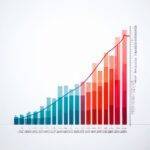The latest Consumer Price Index (CPI) report for April has shown a slight decrease in inflation rates, marking a noteworthy development amidst ongoing economic concerns. Thomas Savidge from the American Institute for Economic Research provides insights into these findings, underscoring the broader implications for American households.
Impact Across Major Cities
WalletHub’s analysis highlights significant disparities in inflation’s impact across 23 major metropolitan areas. Cities like Detroit, Dallas, Honolulu, San Francisco, and Seattle are grappling with pronounced inflationary pressures, particularly in housing and energy sectors.
Housing and Energy Costs Drive Inflation
David Skidmore of Drake University attributes 70% of the 3.4% monthly CPI increase to soaring housing and natural gas prices. The trend of older homeowners staying put due to low fixed mortgage rates has exacerbated housing shortages, driving up prices and rents nationwide.
Most Affected Cities
The cities most affected by inflation include Detroit-Warren-Dearborn, Dallas-Fort Worth-Arlington, Urban Honolulu, San Francisco-Oakland-Hayward, and Seattle-Tacoma-Bellevue, among others. These regions have witnessed significant spikes in living costs, impacting residents’ purchasing power and economic stability.
Continued Economic Challenges
Despite the slight dip in April’s CPI, high inflation persists as a critical economic challenge. The Federal Reserve’s recent stance on interest rates reflects cautious optimism, awaiting sustainable slowdowns in price hikes before implementing rate cuts to stabilize the economy.
Factors Driving Inflation
Inflation is driven by demand-pull, cost-push, and built-in factors, with recent reports highlighting accelerated increases in childcare costs and consumer goods prices. Major chains like Starbucks and McDonald’s are also contending with reduced consumer spending amid inflationary pressures.
Consumer Responses
Reports indicate that consumers are altering purchasing behaviors, with more than a quarter of Americans reportedly skipping meals to cope with inflated grocery costs. This reflects a broader trend of budget constraints and financial adjustments amidst rising living expenses nationwide.
Conclusion
April’s CPI report offers a nuanced view of inflation’s impact, showcasing both localized disparities and broader economic challenges. As households navigate these uncertain economic times, staying informed about regional economic trends becomes increasingly crucial.
For more updates on economic developments and local impacts, download The Local News App today.
This article was compiled by Thomas Bart for The Local News App.









Leave a Reply